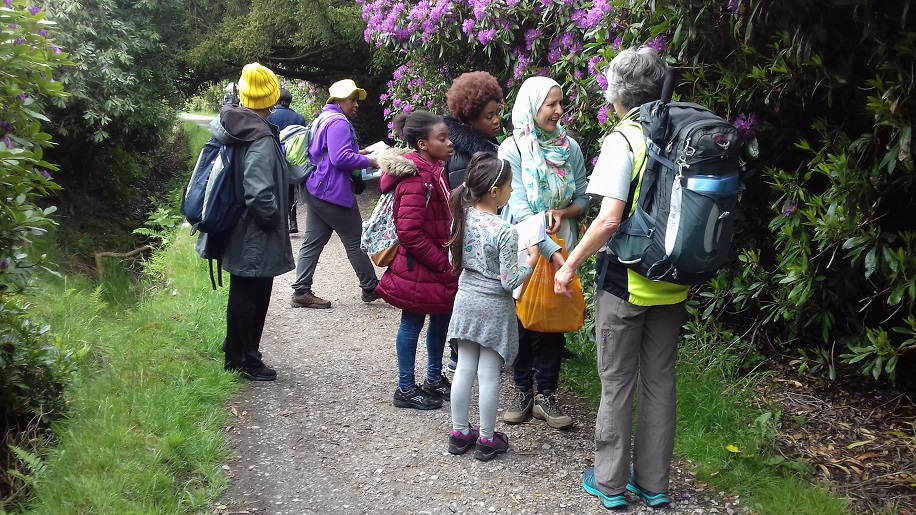Landscapes that tell a story of thousands of years of people, farming and industry
# Perceptions of Cultural Heritage
The historic environment has been defined as the “physical evidence that we see, understand and feel for past human activity”, yet it also includes people’s awareness, appreciation and perception of cultural heritage and the historic environment. [1]
# Over half of all adults nationally state that "heritage is very important to them"

Over half (53%) of adults nationally state that heritage is “very important to them personally”, with 94% agreeing that “it is important to me that heritage buildings or places are well looked after” [2]. Furthermore, members of the public are keen for planning and regulation laws to work to achieve this end, with 74% of adults supporting the use of local authority planning powers to protect heritage.
Cultural heritage has also been found to positively benefit and contribute towards people’s sense of place. Living in ‘more historic’ built environments, defined as the density of listed buildings in an area of residence, is found to share a positive correlation to a strong sense of place [3]. This is especially applicable in protected landscapes like the Peak District National Park, with nearly 3000 listed buildings dispersed across the landscape.
# Awareness of Cultural Heritage: 1/3 of visitors chose to visit the Peak District because of its cultural heritage
A recent 2019/20 survey [4] of visitors found that well over a third chose to visit the Peak District because of its cultural heritage. This proportion rose amongst those aged 45 and over (46%), although just under a third of those aged 16-24 (32%) and those aged 25-44 (30%) also chose to visit because of the area’s historic environment.
By ethnicity, 38% of visitors coming to experience the Peak District cultural heritage were white. This was only a slightly higher share of those from non-white or mixed ethnicity (32%) who visited a cultural heritage or historic site during their visit.
60% of visitors to the Peak District with a physical disability also came to experience cultural heritage. The proportion of visitors with at least one health condition to cultural heritage sites was almost half (46%). A further 21% of all visitors came to the National Park because of its arts and culture.
The 2019 Peak District National Park residents’ visitor survey found that over a third (36%) of residents were aware of Peak District National Park Authority facilitated opportunities for engaging with and conserving cultural heritage. This was up significantly on 27% of respondents to the previous resident survey in 2015/16 [5].
# Promotion of Cultural Heritage in the Peak District
The Peak District National Park Authority carries out a range of cultural heritage activities across the National Park, engaging visitors and residents alike. Events during 2019/20 included Peak District National Park Authority led archaeology family activity days, tours of sites, talks, Derbyshire Archaeological Day and local shows. These events were estimated to engage 2,400 people overall. Furthermore, 1,100 adults and 40 children partook in some of the Peak District National Park Authority’s 100 paid-for guided walks during 2019, with cultural heritage and the PDNP’s historic environment a fundamental elements of these walks [6]. ‘Archaeology and Conservation in Derbyshire and the Peak District’ (ACID) magazine is produced by the Peak District National Park Authority and DCC and 5000 copies are distributed free each year.
What are the gaps in our research & data?
- Development of a valuation model for cultural ecosystem services within PDNP: Engaging with new sector research in this area is essential. How do we ‘value’ cultural heritage ./img and how we communicate messages like cultural ecosystem services being as vital and important as some of the more easily recognised services? How do we better promote the ‘public goods’ that cultural heritage can deliver?
- Enjoyment of and engagement with cultural heritage: How does this add value to the enjoyment and understanding of the Peak District National Park more widely, and how can heritage be better used to engage underrepresented audiences? How can we use new technologies to help us do this?
- Heritage for health and wellbeing: New research makes a clear case for the health and wellbeing benefits that heritage can provide. More research is needed in the Peak District. How can we build on this, to integrate heritage into our health and wellbeing agenda and activities?
- Overall contribution to tourism and the wider economy: Of the top ten most popular Peak District National Park destinations listed on TripAdvisor, all but two include Conservation Areas. We need to research the contribution that heritage makes to the economy in the Peak District. How can we build on this knowledge, and use social media and other heritage destination/tourism evidence more strategically?
National Parks England: NPE Joint Statement on Cultural Heritage 2015 ↩︎
Historic England: https://historicengland.org.uk/content/heritage-counts/pub/2019/heritage-and-society-2019/ ↩︎
Historic England: https://historicengland.org.uk/content/heritage-counts/pub/2019/heritage-and-society-2019/ ↩︎
Historic England: https://historicengland.org.uk/content/heritage-counts/pub/2019/heritage-and-society-2019/ ↩︎
PDNPA: NFP Synergy Visitor Survey 2019/20 ↩︎
PDNPA: 2019 & 2015/16 PDNP Residents Surveys ↩︎